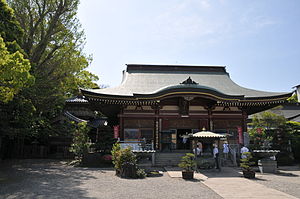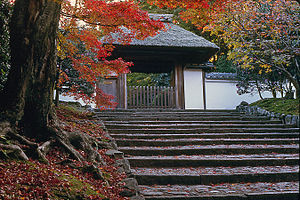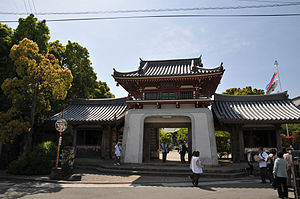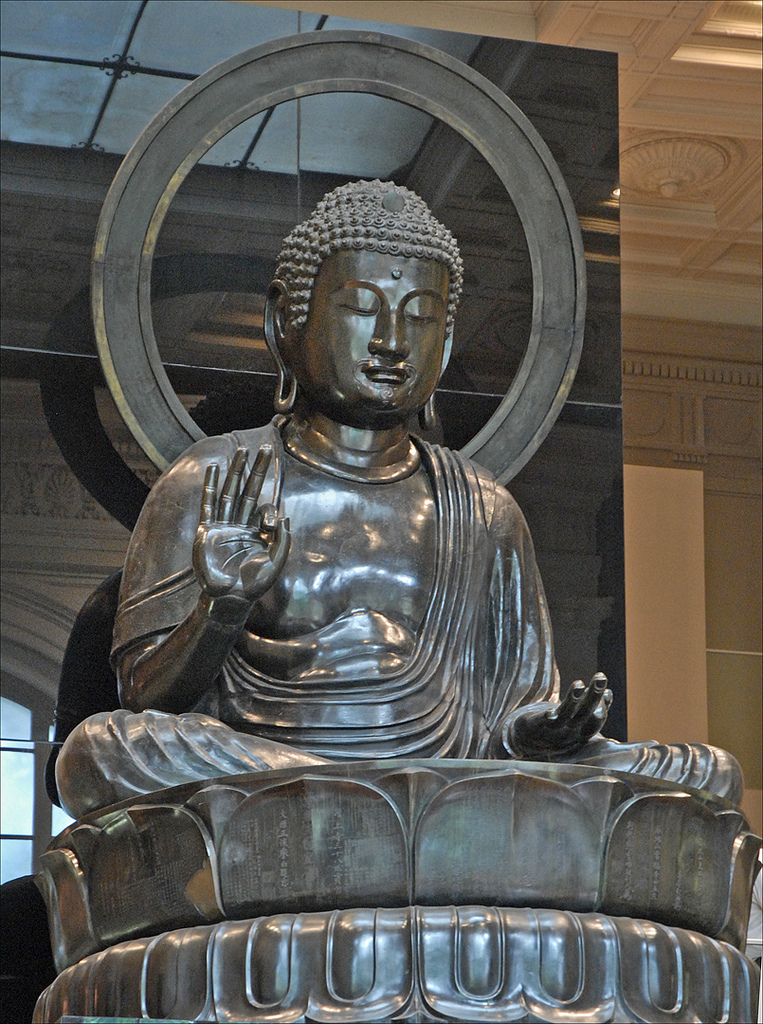
English: Main temple, Anraku-ji 日本語: 安楽寺 本堂 (Photo credit: Wikipedia)
Juren-san Anraku-ji (安楽寺) temple is only open to the public for a few weeks in May and November when blossoms in its garden are in full bloom and when autumn colours the leaves in a appealing beauty.

AnrakujiWP (Photo credit: Wikipedia)
Disciples of priest Honen, Anraku and Juren built a dojo for chanting a prayer to Amida-Nyorai Buddha. They allowed all the people, including women, to be able to practice buddhism and chant sutras which was reserved for the privileged, aristocratic class at that time.

English: Temple gate, Anraku-ji 日本語: 安楽寺 山門 (Photo credit: Wikipedia)
In December 1206, a couple of court ladies, who were serving retired Emperor Gotoba, secretly joined the monks. In February of the next year, the raged Ex-emperor prohibited the chanting and ordered Anraku and Juren death penalties. Priest Honen and another priest were condemned to exile. The dojo fell into ruin for several centuries and then the current temple was established in memory of the brave monks about one kilometer east of the original site.

Buddha Amida (Amitâbha) Musée Cernuschi
Kyoto Dream Trips put a video of a special opening in July for the Shishigatani Pumpkin (kabocha) Service at Anraku-ji Temple (安楽寺) online. The pumpkins are said to help keep illness away. Shishigatani kabocha started to be used as a meal from the mid-Edo period and it is one of Kyoto’s traditional vegetable and used as an ingredient for Kyoto cuisine.
If you plan to visit famous Ginkaku-ji temple when Anraku-ji is open, it may be a good idea to add the Jodo-shu Buddhist sect temple to your journey.
 photo by:
dalbera
photo by:
dalbera